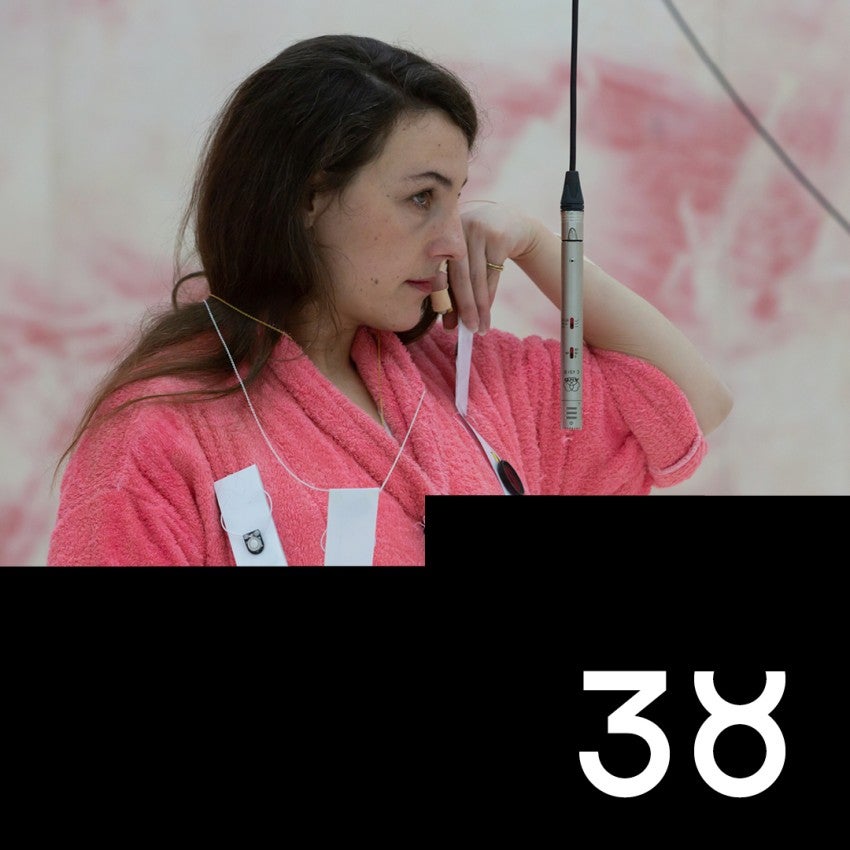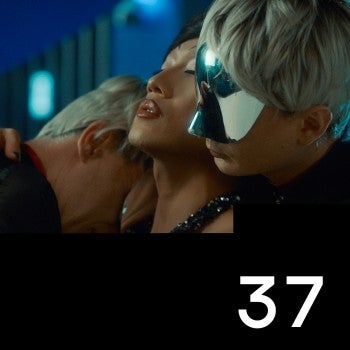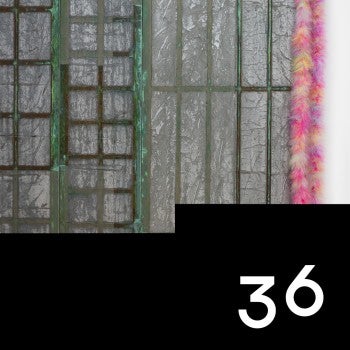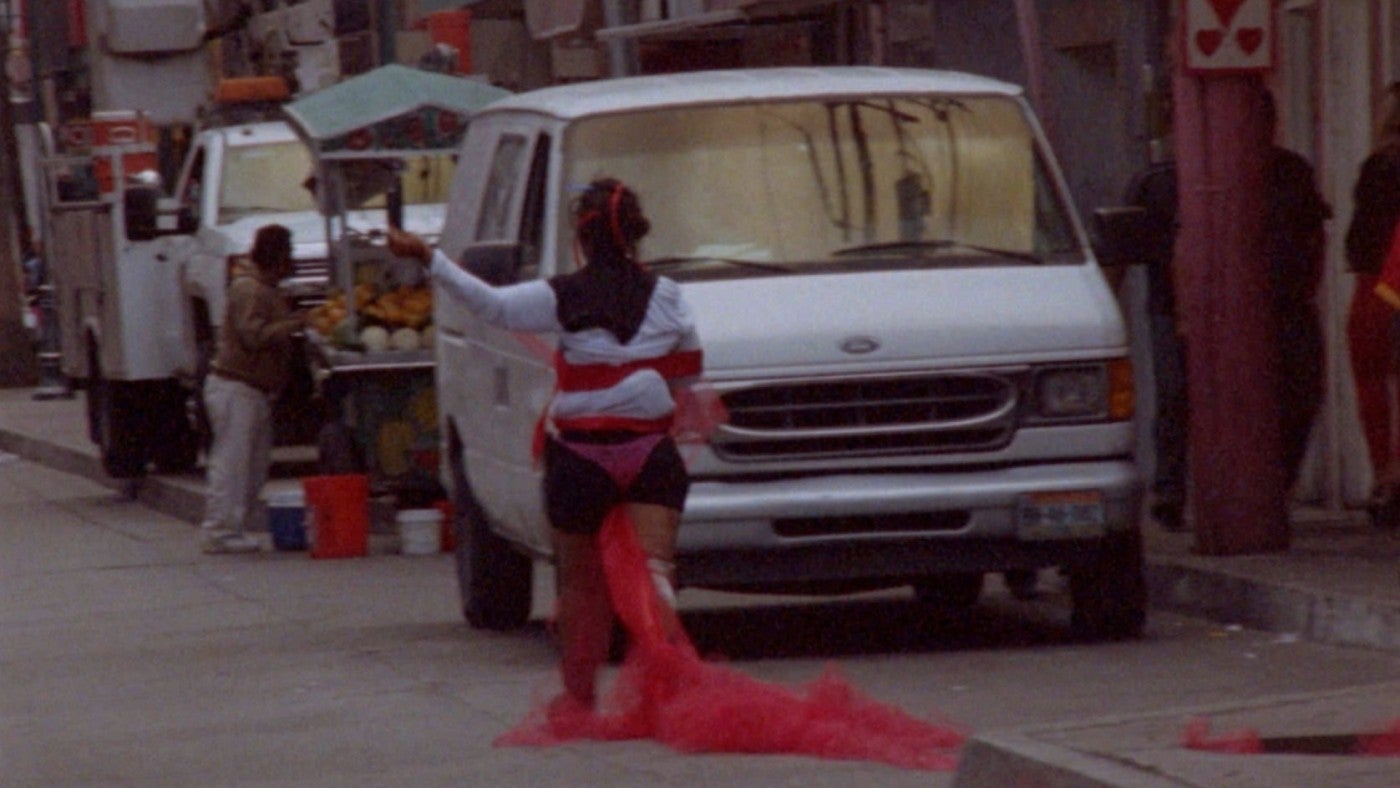
1.
...he confers upon his subjects a dignity which has a visionary and occasionally heart-breaking, quality.
Despite his distinct interest in the margins and marginalized communities and peoples, there is so much at stake in the work of Jean-Charles Hue that it is difficult to know where to start discussing it. Indeed. Should I start with that? The question of margins? Or how about origins? The search thereof? Or even the question of, if not redemption (which looms large), then salvation? Woman? Man? And his relationship to animals. Or what about crime? The criminal and the spiritual. Ritual? Or maybe finally the threshold between life and death? Or thresholds tout court. For all this, and more, are embedded deep within what Hue makes. Rarely have I encountered an art in which the stakes are so high, clear and urgent. It is marked by the evangelical fanaticism of either a believer, or someone who desperately wants to believe. But believe in what? It will be interesting to consider, through this essay, what this is and how it operates in what he does. But before doing so, and trying to address the numerous issues mentioned above, maybe it is best to state the facts.
Jean-Charles Hue (b. 1968) is a French artist and filmmaker whose work exists both within the world of contemporary art and cinema. His work has been shown in galleries, most notably, the Paris/Brussels gallery Michel Rein; institutions, such as his recent show at FRAC Bretagne (2015) or the Fondation d’entreprise Ricard (2007); as well as film festivals, like Cannes, Turin, and others. His full-length films have been the recipients of numerous prizes and accolades, such as the prestigious French Prix Jean Vigo (for Mange tes morts: Tu ne diras point, 2014) and have been critically appraised in Cahiers du cinéma. Hue is probably most well known for his work with and portrayal of a French Yeniche or Roma community outside of Paris, with whom he became quite close, existing among them almost Gonzo-style, making them the subject of several short and then full-length films, made between 2005 and 2014. However, more recently his work has begun to revolve around the Mexican border town Tijuana, where he has become something of an habitué, having explored the city and its inhabitants in numerous short films, which include: Tijuana Jarretelle le Diable (2011), Agua Caliente (2013), Crystal Bullet (2015), Tijuana Tales (2017), and the most recently completed (at least at the time of writing this text), Topo y Wera (2011-2018).
Formally speaking, much has been made of Hue’s mixture of documentary film-making and fiction style, which is as indebted to the pedestrian informality of the French anthropological filmmaker Jean Rouch as it is to the poetic film essays of Chris Marker. The debt is methodological, formal, and even spiritual, in so far as it is difficult to separate documentary and fiction in the work of these two filmmakers– i.e., where, say, the real ends or the constructed begins– and formal in that a fair amount of filming takes place via the informality of a hand-held camera. The spiritual component can be located in the quest-like compulsion to if not travel (no small coincidence that one of his primary subjects are “travelers”), then to inhabit the liminal space of the border, which is synonymous with a quest for salvation, but differs greatly from them in that his traveling is much more figurative and of the order of the outsider: the outsider as both foreigner and misfit. In this sense, Hue is probably closer to writers like Jean Genet and Roberto Bolaño, not only because of their proclivities for the unacceptable and non conformity, but also because of their willfully marginal status and religious or fetishistic valorization thereof. But if this is but an aspect of their– Genet, Bolaño’s– projects, it is integral to the ethos and fabric of Hue’s films. All that said, Hue does not necessarily idealize or romanticize the margins or marginal figure, or at least not in the traditional sense. Any idealization he might project onto them contains an almost religious component, as they, in their debasement become otherworldly, all but cinematically flickering on the frontier between the quick and the dead. Otherwise, he confers upon his subjects a dignity which has a visionary and occasionally heart-breaking, quality. He does so through the relatively dispassionate, non-melodramatic gaze of his camera and his non-judgmental readiness to engage and pay attention to the people he’s filming, whether they be eating, hanging out, or stealing, smoking crack, creating their own rituals or in thrall to their own clairvoyant insight.
2.
Although he is much more known for his work with a Yeniche community, Hue’s interest and concentration on Tijuana over the past ten years does if not mark a shift in the practice, then offer a special insight into how it functions. As far as geographies go, it is, in large part, the perfect place for the artist to explore the issues which matter most to him. Why and how? First of all: Tijuana. It is worth dwelling on this singular frontier town for a moment before addressing how Hue engages with it. Originally founded in 1889, Tijuana is a border town which has lived a number of lives, virtually none of which have been really respectable. Always something of a destination for tourists, it flourished as a locus of license and iniquity during Prohibition, due to the fact that liquor and gambling were legal there. With the introduction of the Agua Caliente Tourist Complex, which featured a hotel, spa, dog-track, private airport, golf course and casino, the complex and the city achieved a certain level of glamour and mythical status, with Hollywood stars and gangsters becoming regular visitors. This golden age, so to speak, came to an end in 1935 when then President Cárdenas banned gambling and casinos. Since then, the city has continued to grow while its nature has fluctuated, with tourism remaining a major source of revenue. However, a major spike in crime due to drug-traffic related turf wars from 2008 to 2011 slowed down its position as a licentious tourist destination, obliging it to become more self-sufficient.
Since that time however, Tijuana has evened out, becoming safer both for investment and cultural production (indeed, although you wouldn’t necessarily know it from Hue’s films, Tijuana is a site of active cultural production, which includes art, music, and film, and has some of the best cuisine in the country– it’s not all bad). Nevertheless, its incredibly low cost of living and proximity to the United States continue to make it attractive to some of the seedier elements in the US, whose American dollars go much further there than they would state-side, allowing them to pursue and maintain, say, hard-core drug habits with comparative ease in TJ (as the city is otherwise known). It is also important to mention the almost uncanny omnipresence of the border, which, it just so happens, is the busiest land border in the world. The sinister and monolithic shadow it casts over Tijuana can be seen and felt throughout the entire city, that which renders it physically, socially and, above all, psychologically inescapable and haunting. Indeed, to say that Tijuana is a haunted city – by its own past, even its present purgatorial liminality, and the uncertainty of its future – is an understatement. Tijuana is, in many ways, a living, urban phantasmagoria.
“Orientalism,” he claims, “is a promise, an invitation to the voyage.”
It is for these many reasons– its liminal status as an illicit, mythical (haunted), crime-roiled, chthonic underworld– that Tijuana is so fertile for Hue’s interests. The theme of haunting and chthonic, for instance, happens to be at the center of Hue’s clearly fictional short from 2013: Agua Caliente. Essentially a two-part film, the first part recounts the history of the casino complex, Agua Caliente, and one of its most notorious legends, that of La Faraona, while the second part symbolically re-enacts La Faraona’s end. The first part consists of a series of initially, quasi-abstract close-ups of a swimming pool and its environs (presumably Agua Caliente) accompanied by a voice over of an unseen older woman, born in 1946, who recalls the ruins of the complex and its gradual surrender to decay, and the impact that they, as a source of mystery, had on the collective imagination. After reflecting on the almost complete destruction of the complex and its bygone glory, she begins to tell the tale of La Faraona, a dancer of famed beauty exploited by her English, reprobate gambler boyfriend who took advantage of her for her earnings, eventually stealing and squandering her treasure– a bag of gold and gems– on his habit. After she discovered his crime and in the ensuing melee that followed, they both swallowed poison, of which only he survived. According to the tale, on full moons her ghost comes back to seek her treasure. While we are being told this, the imagery shifts to close ups of a classical interior, which is presumably a bungalow. These are the only significant architectural remnants of Agua Caliente and also supposedly where La Faraona and her lover lived. Cue part two: a rather comely young Mexican woman languishing on a couch in a white dress and a Mexican man in a white suit with no shirt pouring himself a drink. A romantic ballad kicks in, and we see her crawling around on her hands and knees in front of the bungalow at the end of a ribbon leash held by him standing on the deck. The film beautifully, if uncomfortably, ends with a long, thin knife blade pushing around a pool of crimson colored gems on her brown belly.
While the initial implication of the film might seem to point toward an interest in death and eroticism, it has more to do with Hue’s stated preoccupation with so-called orientalism, for which Tijuana becomes an “exotic”, not un-ironic, metaphor. Of course, when I write “orientalism,” I am not necessarily talking about Edward Said’s critical deconstruction of the dehumanizing and colonial fetishism of the Middle East, but rather in the way in which Hue almost naively conceives of it. “Orientalism,” he claims, “is a promise, an invitation to the voyage1.” It has more to do with fantasy, even hallucination and the drive to discover. Thus we are treated to a fantasy of Tijuana which is also an essential component of its own legend, making it such that fantasy and legend, as in the case of La Faraona, are part and parcel of the actual place.
3.
...she recounts what she sees, which are “visions,” primarily of a devil that wants to get her.
In virtually all of Hue’s Tijuana films, a woman, or woman in general, becomes a transitional, if liminal figure, existing on the threshold of the dead and the living, as well as operating as a sacred–as in sacrificial–conduit between the two worlds. Indeed, she all but functions as a precious fulcrum in a complex order of balance. I am thinking not just of La Faraona, who’s undoing seems to, if not parallel, then to usher in the downfall of Agua Caliente, but also in particular of the character “Pretty Eyes” in Tijuana Jarretelle le Diable (2011). Deploying the same cinematographic method as Agua Caliente of a trance-like roaming camera in which sensuous close ups of details (clothes, bodies, furniture) come in and out of focus, the film is narrated via voice over by a man. Strongly reminiscent of a kind of magical realism, the film relates a relationship between “El Tuerto” (one-eye) who many believe to be if not the devil himself, then a close associate, and the otherworldly “Pretty Eyes”: a beautiful, white dress-clad woman who seems to float and exist in a trance, and who has been 7 or 8 months pregnant for two years. She is believed to be carrying El Tuerto’s baby, which she does not want to have, for to have his–the devil’s–baby would be to unloose the end of the world. However, due to a complex system of exchange, in which Yvon (another character) who is in search of her missing brother, trades flashy clothes which enchant Pretty Eyes with El Tuerto for videos of drug war executions, the birth of the child (i.e., the end of the world) grows incrementally closer to taking place.
Another short film, “Tijuana Tales” (2017), sees Hue working in a mode for which he has become known, in which conventional fictional narrative is all but indistinguishable from documentary footage. Shot on hand-held 16 mm camera, the piece is formally evocative of a cross between João Maria Gusmão + Pedro Paiva’s quasi mystical meditations, Chris Marker’s Sans Soleil (1983) and Jean Rouch’s Les Maîtres Fous (1955), but goes somewhere entirely its own. Here the tale revolves largely around Roxana, an attractive, crack-smoking prostitute (whose children, about whom she speaks often, we learn, “are far away”) and Charlie, her snake-hunting caretaker (who might well be a pimp), who gives her and other “street walkers” massages in his van in between servicing clients. Additionally, the film is punctuated by a motley cast of Shaman-like women, certain of which seem to float above the ground, and all of whom seem to have been damaged to the point of either insanity or otherworldliness– that which seems to be one and the same if not in Hue’s universe, then certainly in that of indigenous cultures as per Rouch. Indeed, in Hue’s universe, one often gets the feeling of people, both men and women, departing the profane world of the everyday, either through drug use, communion with animals (Charlie and his snakes), violence or even crime, and entering the sacred space of the liminal, of the homo sacer2– a space, it just so happens, to be embodied and demarcated by Tijuana itself. “A malediction for these women”, as Charlie claims of the border town (while in Tijuana Jarretelle le Diable, it is described as a place that “steals souls”). We come across a woman, wearing layers of clothes including a violet G-string on the outside of her spandex, dragging a long red train, as if from a wedding dress, from which she plucks fragments and throws them on the street as if scattering benedictions. Another damaged woman, Ana, who we find in a bed full of trash, is a queen, the narrator tells us, on another planet which is north of Tijuana, after whom we meet Marlene, no less damaged looking than Ana, who collects lenses from glasses which supposedly have the power to restore sight to her dead eye. At a certain point, we rejoin Roxana, whom the artist has been searching for. She asks him for money for drugs, which he gives her, also buying her a bit of food. She brings him to a room, they lie down on a bed together and she recounts what she sees, which are “visions,” primarily of a devil that wants to get her. We then find her in a room (presumably in her vision) rubbing a red cross which has been sloppily painted on the wall while a heavily tattooed gangster (the devil?) stares at her. Towards the end we find her sitting listlessly in the same room at dawn with blurry imagery of Tijuana, the phantasmagoria of Tijuana, projected on the walls above her.
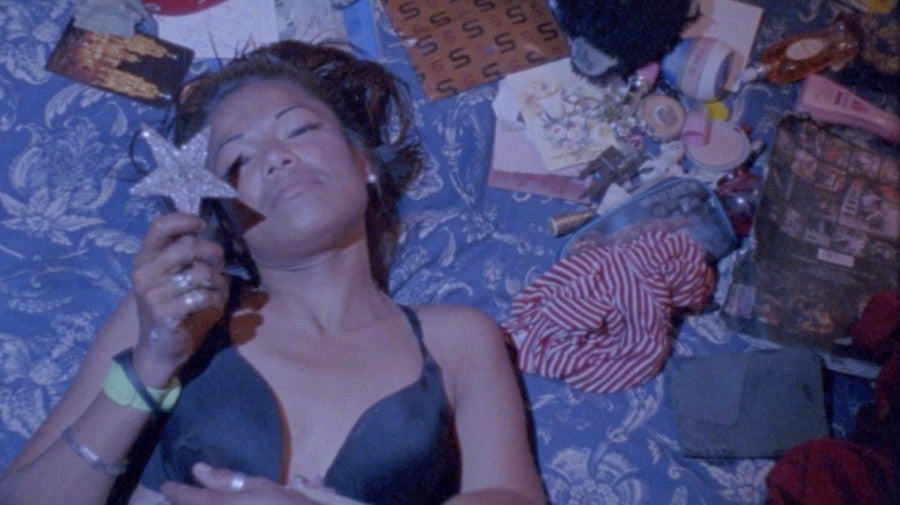
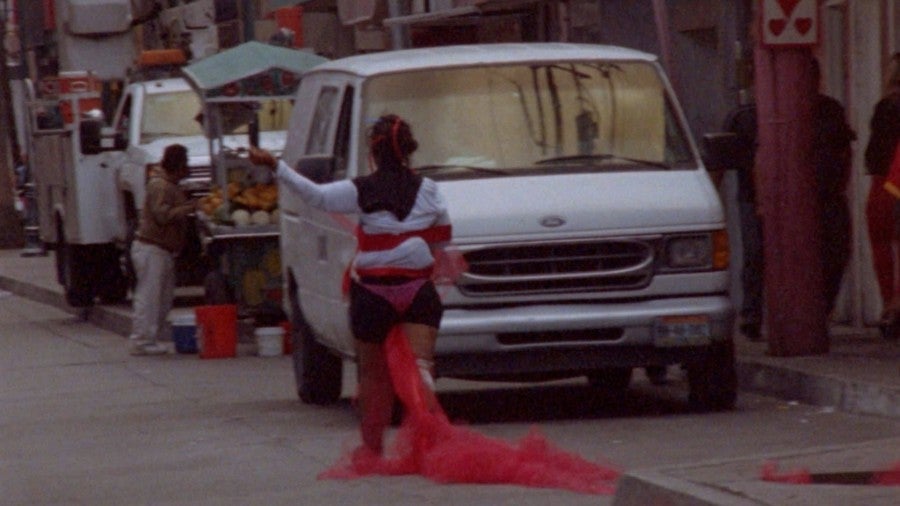
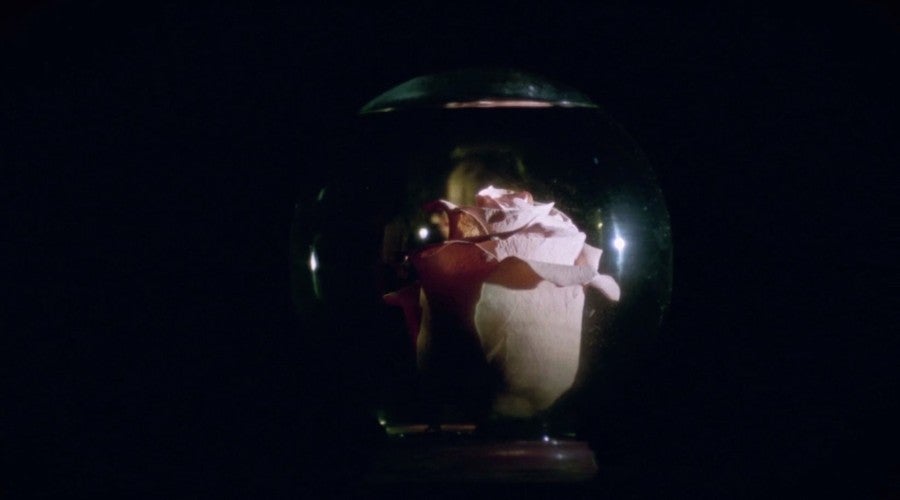

If Hue insists largely on the depiction of femmes perdues, as opposed to men, in his Tijuana films, it is because he sees the women as symbolic of Tijuana itself. “In Tijuana, in the Zona Norte,” he claims, “women expose their bodies to potential clients. Since its creation by America over a century ago, Tijuana also prostitutes itself. At the time, women incarnated an eternal, desirable femininity who, in the space of an instant, would make men forget about their impending deaths3.” By the same token, the forfeiture of Tijuana’s initial glamour and beauty (Hue is always happy to remind people that Rita Hayworth was discovered on stage there in the early 30s) parallels the fall of its women, reminding us that if they have been reduced to wraiths, it is because Tijuana is also and essentially a shadow of its former self.
4.
Where the strange, hallucinatory beauty of Tijuana Tales leaves a haunting, dream-like residue in the mind, Topo y Wera (2011-2018), a kind of love story, takes a blunter, more challenging and more documentary approach to depicting the city. Altogether more tragic, this long short follows Topo, a heavily tattooed, former drug dealer/sicario (Mexican assassin) turned drug addict and petty thief and his partner Wera, also a thief and drug addict, among their chthonic peregrinations throughout Tijuana as they do drugs, play electronic slot machines, pick through street markets, steal and/or pay visits to friends, like the irascible Martin, a toothless American hoarder who believes everyone is stealing from him (which they are). We learn of the loss of their child Charlie (taken away by a cop), the survival of a bullet to Topo’s head, of which he bears a visible scar, as well as the executions of child rapists that he carried out. The first part of the film culminates with Topo stealing a pair of shorts from Martin on film (not to mention the very harrowing revelation of Martin’s testicular encephalitis).
If you thought the first part of the film was difficult to watch, you soon learn that, while watching the second part, it was categorically halcyon in comparison. It is now seven years later, and Topo, a wraith of his former self, is alone, having lost Wera, and lives on the streets in Tijuana.What follows, the filth and squalor in which he lives and of we are given an extensive tour, is actually difficult to watch. Jumping a fence, we follow him into a kind of detritus-covered and trash-bestrewn warren of derelict buildings, and see where he sleeps, which is a kind of hovel under a set of concrete stairs that lead to nowhere. The film ends with older, silent footage of Topo and Wera walking down the street together in Tijuana. It’s as if Topo became lost among the margins of a marginal place, Tijuana. He, like many of the figures who inhabit Hue’s Tijuana’s films, would seem to be lost souls. But lost or not, Hue does not necessarily pity or feel sorry for them. If anything, he seems, I am tempted to say, to envy them. Why? Perhaps he envies their willingness or capacity to abandon themselves to such extremes, to tread so openly upon mortal thresholds and yield to a kind of unreality, which can never be divorced from reality, but which enters into and exists within it at an almost hallucinatory level. And at the same time, he is also driven, by his own admission, to bear witness (to that which most people can’t even bear to look at). “I believed and sometimes still believe in certain artistic qualities contained in my work, but the more time passes,” he writes, “and the more I step back, the more I strongly believe that the only true interest that my work can offer is that of having testified to that which has disappeared. This has always been the main function of the moving image since its invention and it is why I have chosen it as a medium, to record between light and darkness that which is already no longer4.” In this case, it is not only Topo and Wera, and the many wraiths who haunt Tijuana, but Tijuana itself. As such, Hue becomes a witness on the threshold– not only physically, as in being on the border between countries; spiritually, as in between life and death; and historically, such as in the increasingly endangered longevity of Tijuana, but also from his position behind the camera, as someone who films, and is just barely removed from but nevertheless in the thick of the action. This is precisely where, for all its apparent unruliness and anarchic liminality, his entire project expertly synthesizes, all but disappearing into itself.
Jean-Charles Hue, Y’a pas de prévenance !, Pg. 140
From ancient Rome, the homo sacer was a figure who had been banned and thereby deprived all rights such that he could be killed by anyone, but could not be sacrificed in a religious ritual. See Giorgio Agamben, Homo Sacer: Sovereign Power and Bare Life Stanford, California: Stanford University Press, 1 April 1998.
Email from the artist, 2019
Email from the artist, 2019.










